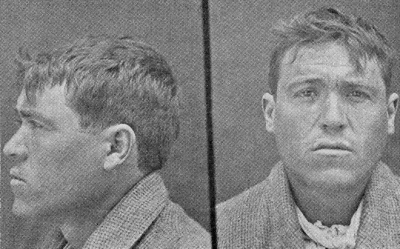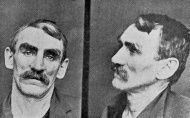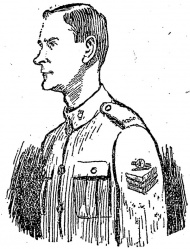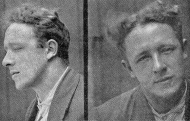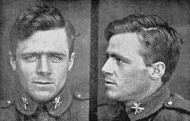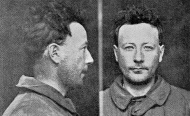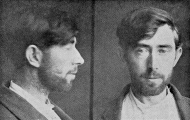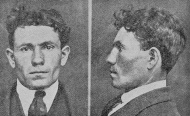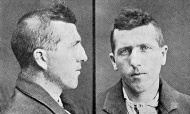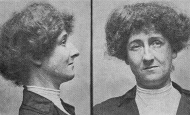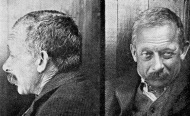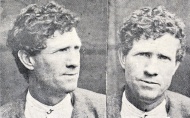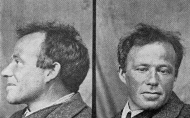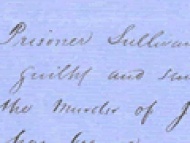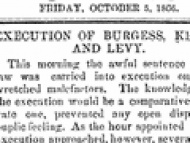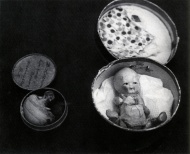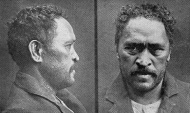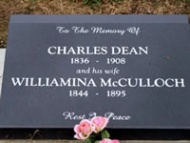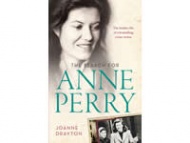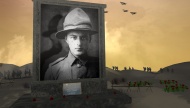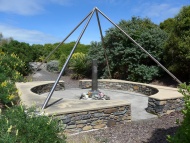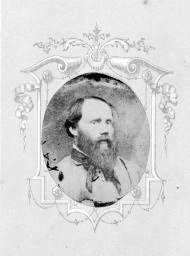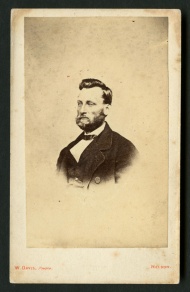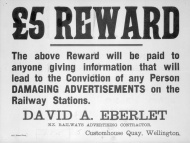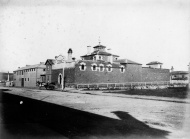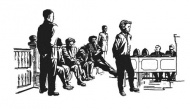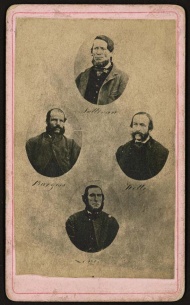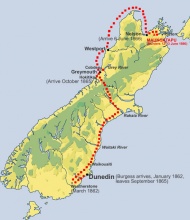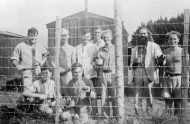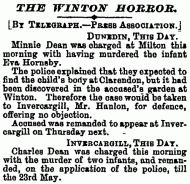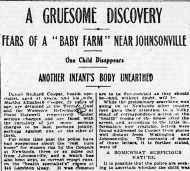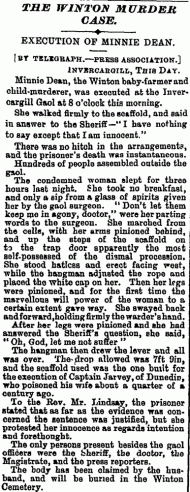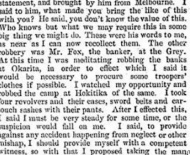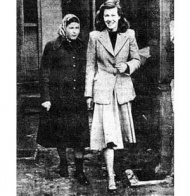Events In History
-
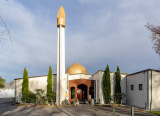 15 March 201951 killed in mosque shootings
15 March 201951 killed in mosque shootingsNew Zealand’s Muslim community suffered an horrific attack when a self-proclaimed ‘white nationalist’ opened fire on worshippers at two mosques in Christchurch. Fifty people were killed and 41 wounded, one of whom died six weeks later. Read more...
-
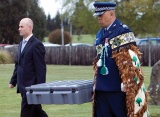 21 October 2008Stolen medals returned to National Army Museum
21 October 2008Stolen medals returned to National Army MuseumThe 96 medals, including nine Victoria Crosses, two George Crosses and an Albert Medal, had been stolen from the Waiōuru museum early on the morning of 2 December 2007. The VCs included those awarded to Reginald Judson, Keith Elliott and Henry Laurent. Read more...
-
 13 November 1990Thirteen shot dead at Aramoana
13 November 1990Thirteen shot dead at AramoanaThe small seaside township of Aramoana, near Dunedin, was the scene of what was then the deadliest mass murder in New Zealand history. Read more...
-
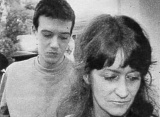 1 September 1987New Zealander sentenced to death in Malaysia
1 September 1987New Zealander sentenced to death in MalaysiaLorraine Cohen was sentenced to death by a Malaysian judge for heroin trafficking. On appeal her sentence was commuted to life imprisonment. The trial of Lorraine and her son Aaron, who was arrested at the same time, gained worldwide attention. Read more...
-
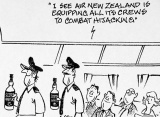 19 May 1987Attempted hijacking in Fiji foiled
19 May 1987Attempted hijacking in Fiji foiledAn attempted hijacking of an Air New Zealand Boeing 747 at Nadi airport, Fiji, was thwarted when a member of the cabin crew struck the hijacker on the head with a whisky bottle. Read more...
-
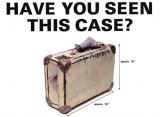 27 March 1984Trades' Hall bombing
27 March 1984Trades' Hall bombingCaretaker and unionist Ernie Abbott was killed on 27 March 1984 when a bomb exploded inside Trades’ Hall on Wellington’s Vivian St. Read more...
-
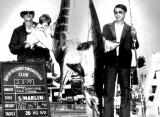 14 October 1979'Mr Asia' found murdered
14 October 1979'Mr Asia' found murderedThe gangland murder of ‘Mr Asia’ (Marty Johnstone) led to the demise of one of New Zealand’s largest ever drug rings. Johnstone was killed on the orders of drug lord Terry Clark. Divers found his mutilated body in a flooded quarry in England. Read more...
-
 31 May 1975Mona Blades vanishes
31 May 1975Mona Blades vanishesEighteen-year-old Mona Blades was last seen sitting in the back seat of an orange Datsun station wagon. Her body was never found and her disappearance has never been explained. Read more...
-
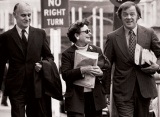 27 September 1974William Sutch charged with spying
27 September 1974William Sutch charged with spyingOn a rainy night in Wellington’s Aro St, the Security Intelligence Service (SIS) gatecrashed a meeting between William Sutch and Dimitri Razgovorov. They believed Sutch, a prominent economist and former senior public servant, was passing information to Razgovorov, a Soviet diplomat. Read more...
-
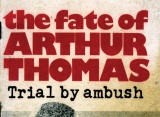 16 April 1973Arthur Allan Thomas convicted of Crewe murders – again
16 April 1973Arthur Allan Thomas convicted of Crewe murders – againWaikato farmer Arthur Allan Thomas was found guilty – for the second time – of the 1970 murder of his Pukekawa neighbours Harvey and Jeanette Crewe. Read more...
-
 7 December 1963Bassett Road machine-gun murders
7 December 1963Bassett Road machine-gun murdersThe bullet-ridden bodies of Frederick George Walker and Kevin James Speight were found in a house on Bassett Rd in Remuera, Auckland. A team of 32 detectives began enquiries that led to the arrest of Ron Jorgensen and John Gillies. Read more...
-
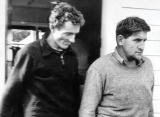 17 May 1962George Wilder escapes from prison
17 May 1962George Wilder escapes from prisonGeorge Wilder was a burglar who left apology and thank-you notes for his victims. He was at large for 65 days, becoming a folk hero in the process. Read more...
-
 18 August 195520-year-old hanged for murder
18 August 195520-year-old hanged for murderEdward Te Whiu was one of the last four people executed in New Zealand. He admitted to killing 75-year-old widow Florence Smith, but his underprivileged background and childlike mental state led some to question the appropriateness of the death penalty. Read more...
-
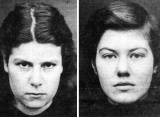 28 August 1954'Heavenly creatures' found guilty of murder
28 August 1954'Heavenly creatures' found guilty of murderPauline Parker, aged 16, and Juliet Hulme, 15, were convicted of the murder of Pauline's mother Honora at Christchurch on 22 June. Their story was later the subject of Peter Jackson's acclaimed film, Heavenly creatures. Read more...
-
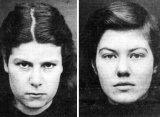 22 June 1954Parker-Hulme murder in Christchurch
22 June 1954Parker-Hulme murder in ChristchurchArmed with a brick in a stocking, 16-year-old Pauline Parker and her best friend Juliet Hulme, 15, became two of New Zealand's most notorious female murderers when they killed Pauline's mother, Honorah, in Victoria Park, Christchurch. Read more...
-
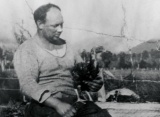 8 October 1941Stan Graham's killing spree on West Coast
8 October 1941Stan Graham's killing spree on West CoastDairy farmer Stanley Graham killed seven people in Kōwhitirangi on the South Island’s West Coast. Read more...
-
 17 September 1941Flogging and whipping abolished
17 September 1941Flogging and whipping abolishedAs well as (temporarily) doing away with capital punishment for murder, the Crimes Amendment Act 1941 abolished judicial provision for flogging and whipping. Read more...
-
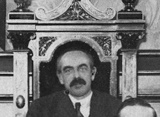 3 May 1929Controversial ex-mayor killed in Berlin riots
3 May 1929Controversial ex-mayor killed in Berlin riotsCharles Ewing Mackay, the disgraced former mayor of Whanganui, was shot dead by Berlin police during May Day riots in the German capital. Read more...
-
 16 June 1923Baby-farmer Daniel Cooper hanged
16 June 1923Baby-farmer Daniel Cooper hangedA generation after the hanging of the infamous Minnie Dean, the murder trial of Daniel and Martha Cooper revealed that ‘baby farming’ and illegal abortion were still regarded as solutions to the problem of unwanted children in New Zealand. Read more...
-
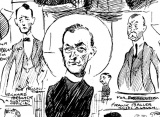 17 May 1922Catholic Bishop found not guilty of sedition
17 May 1922Catholic Bishop found not guilty of seditionJames Liston, the assistant bishop of Auckland, was found not guilty of sedition following a high-profile court case. Read more...
-
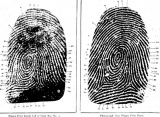 28 May 1920Fingerprints help convict murderer
28 May 1920Fingerprints help convict murdererIn what may have been a world first for a capital crime, the conviction of Dennis Gunn was based almost entirely on fingerprint evidence. Read more...
-
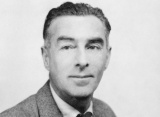 15 May 1920Whanganui mayor shoots poet
15 May 1920Whanganui mayor shoots poetThe victim of the shooting, poet Walter D’Arcy Cresswell, alleged that Mayor Charles Mackay had made homosexual advances towards him in the mayoral office and panicked when faced with the prospect of public exposure. Read more...
-
 27 August 1911Pawelka's last prison break
27 August 1911Pawelka's last prison breakJoseph Pawelka’s escape from Wellington’s Terrace Gaol was the last of three bold but seemingly effortless prison escapes he made over a period of 18 months. Read more...
-
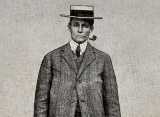 27 May 1909Amy Bock sentenced in Dunedin Supreme Court
27 May 1909Amy Bock sentenced in Dunedin Supreme CourtThe Tasmanian-born confidence trickster topped a long career impersonating well-off men for financial gain by claiming to be a sheepfarmer and the nephew of a bishop. Read more...
-
 24 September 1905Racist killing in Wellington's Haining St
24 September 1905Racist killing in Wellington's Haining StThe murder of retired miner Joe Kum Yung by white supremacist Lionel Terry in Wellington’s Haining Street highlighted the hatred some felt towards New Zealand’s small but long-established Chinese community. Read more...
-
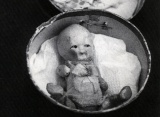 12 August 1895Winton baby-farmer Minnie Dean hanged
12 August 1895Winton baby-farmer Minnie Dean hangedIn 1895 Southland’s Williamina (Minnie) Dean became the first – and only – woman to be hanged in New Zealand. Her story exposed the stark realities of paid childcare and the lack of choice for many women in this period. Read more...
-
 29 December 1880Tuhiata hanged for murder of Mary Dobie
29 December 1880Tuhiata hanged for murder of Mary DobieTuhiata (Ngāti Ruanui, Tītahi; known as Tuhi) was hanged in Wellington for the murder of the artist Mary Dobie at Te Namu, near Ōpunake. He wrote to the governor of New Zealand a few days before his execution, asking that 'my bad companions, your children, beer, rum and other spirits die with me'. Read more...
-
 16 November 1869Hamiora Pere executed for treason
16 November 1869Hamiora Pere executed for treasonHamiora Pere was hanged at the Terrace Gaol, Wellington. He is the only New Zealander to have been executed after being convicted of treason. Read more...
-
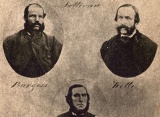 5 October 1866Maungatapu murderers hanged in Nelson
5 October 1866Maungatapu murderers hanged in NelsonBurgess, Kelly and Levy were hanged. Joseph Sullivan, the fourth member of the 'Burgess gang', received a life sentence after turning Queen's evidence and helping convict his co-accused. Read more...
-
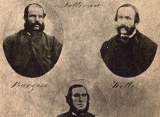 13 June 1866Murder on the Maungatapu track
13 June 1866Murder on the Maungatapu trackThe murder of five men on the Maungatapu track, south-east of Nelson, in June 1866 shocked the colony. Read more...
-
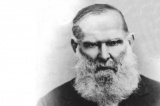 22 January 1863Slave trader competes in Wellington Anniversary Regatta
22 January 1863Slave trader competes in Wellington Anniversary RegattaSlave trader Captain Thomas McGrath skippered the winning whaleboat in a race on Lambton Harbour which carried a £10 prize Read more...
-
 4 March 1855Legendary sheep rustler James Mackenzie caught
4 March 1855Legendary sheep rustler James Mackenzie caughtIn March 1855, shepherds searching for 1000 missing sheep in the upper reaches of the Waitaki Valley apprehended suspected rustler James Mackenzie, one of New Zealand’s first and most enduring folk heroes. Read more...
-
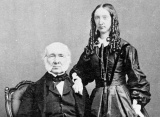 18 April 1847Gilfillan killings near Whanganui
18 April 1847Gilfillan killings near WhanganuiA Māori raid on the Gilfillan farm at Matarawa, just east of Whanganui, left four members of the family dead. The artist John Gilfillan and one of his daughters were severely wounded. Read more...
-
 7 March 1842New Zealand's first official execution
7 March 1842New Zealand's first official execution17-year-old Maketū Wharetōtara was hanged in public, at the corner of Queen and Victoria streets in Auckland, for the 1841 murder of Elizabeth Roberton, her two children, and two other adults. Read more...
-
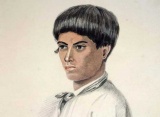 20 November 1841Mass murder in the Bay of Islands
20 November 1841Mass murder in the Bay of IslandsMaketū Wharetōtara, the 17-year-old son of the Ngāpuhi chief Ruhe, killed five people at Motuarohia in the Bay of Islands. In March 1842 he became the first person to be legally executed in this country. Read more...
Articles
The death penalty
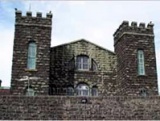
The first execution in New Zealand was that of a young Maori named Maketu, convicted at Auckland in 1842. Walter Bolton became the last to be executed when he was hanged at Mount Eden prison in 1957. In total there were 83 verified executions for murder and one for treason in New Zealand between these dates.
-
Page 2 – The first execution
On 7 March 1842 Maketu Wharetotara, the 17-year-old son of the Ngāpuhi chief Ruhe of Waimate, became the first person to be legally executed in New Zealand.
-
Page 4 – The last execution
Walter Bolton was the last person to be executed in New Zealand when he was convicted of poisoning his wife, Beatrice. He was hanged for her murder at Mount Eden prison. The
-
Page 5 – List of executions
Between Maketu's execution in 1842 and Walter Bolton in 1957, there were a further 82 executions.
-
Page 6 – Further information
This web feature was written by Steve Watters and produced by the NZHistory.net.nz team. Information about the execution of Maketū Wharetōtara was updated in 2021.
Capital punishment

There were 83 verified executions for murder and one for treason in New Zealand between 1842 and 1957. The activities in this feature provide opportunities to discuss views around the death penalty.
- Page 1 - Capital punishmentThere were 83 verified executions for murder and one for treason in New Zealand between 1842 and 1957. The activities in this feature provide opportunities to discuss views around
Maungatapu murders, 1866
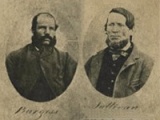
The 'Burgess gang' murdered and thieved their way around the South Island during the 1860s. Their most notorious crime was five killings over two days in June 1866, on the Maungatapu track near Nelson. Now you can read their story in a virtual comic book.
-
Page 2 – The Burgess gang
Richard Burgess, the gang's ringleader, originally known as Richard Hill, had been transported from London to Melbourne for theft at the age of 16, arriving in 1847
-
Page 3 – The crimes
In May 1866 the Burgess gang embarked on a crime spree on the west coast of the South Island that would culminate in the murder of five men on the Maungatapu Track.
-
Page 4 – Sullivan's betrayal
Joseph Sullivan claimed to have acted solely as a lookout for the gang, and told the police about the killing of James Battle, incriminating the others
-
Page 5 – The trial
Deposition proceedings against the gang began on 2 August 1866 amid great excitement. Only now was it revealed that Sullivan had informed on the others.
-
Page 6 – The executions
Members of the Nelson Volunteers surrounded the gaol on the morning of the execution to ensure that 'good order was maintained' by the public.
-
Page 7 – Aftermath
When Joseph Sullivan returned to Hokitika to give evidence about the robbery of the Hokitika police camp and the murder of George Dobson, a mob called for him to be lynched
-
Page 8 – Further information
Further reading and links to information about the Maungatapu murders
Baby farmers
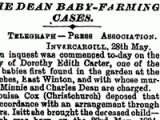
Baby farmers were paid caregivers who allegedly neglected children in their care, concealed their deaths or deliberately murdered the infants. The most notorious was Minnie Dean, who, in August 1895, became the first (and only) woman to be hanged for murder in New Zealand.
-
Page 2 – From childcare to baby farming
High-profile British and Australian court cases in the 1880s introduced New Zealanders to the sinister practices of baby farmers: paid caregivers who neglected children in
-
Page 3 – Minnie Dean
In 1895 Southland's Williamina (Minnie) Dean became the first – and only – woman to be hanged in New Zealand. Her story exposed the stark realities of paid childcare and the
-
Page 4 – The Newlands baby farmers
The sensational murder trial of Daniel and Martha Cooper revealed that the difficulties facing single mothers and unwanted children continued well into the 20th century.
Crime timeline
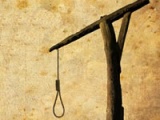
’New Zealand is often seen as a relatively safe country, but as this selection of notable crimes shows, the country has had its share of homicides, violence and other criminal acts. This timeline of more than 75 events can also be viewed as a map.
-
Page 2 – Further information
Links and books relating to NZ crimes
Policing the war effort
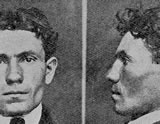
In 1914 the New Zealand government moved quickly to strengthen the rule of law and keep the country focused on winning the war
- Page 1 - Policing the war effortIn 1914 the New Zealand government moved quickly to strengthen the rule of law and keep the country focused on winning the
Homosexual law reform

The homosexual law reform campaign moved beyond the gay community to wider issues of human rights and discrimination. Extreme viewpoints ensured a lengthy and passionate debate before the Homosexual Law Reform Act was passed in July 1986.
-
Page 3 – Birth of the gay movement
Social and political groups for homosexuals in New Zealand began with the Dorian Society in the 1960s. Within a decade, sexual and social liberation was in the air.
-
Page 4 – Reforming the law
To bring about change in the law, the gay movement needed a parliamentary champion. It found one in Labour MP Fran Wilde.
Children and adolescents, 1930-1960

The need for the New Zealand government to promote national interests during the Depression and the Second World War created a renewed appreciation of the role of the family within society.
- Page 4 - The post-war family As a consequence of the post-war economic boom there was increasing demand for consumer goods. The 1956 census revealed that more than half of New Zealand homes possessed
The 1920s

The 1920s was the decade that modern New Zealand came of age. Despite political and economic uncertainty, the country shrugged off the gloom of war to embrace the Jazz Age - an era of speed, power and glamour. Explore an overview of the decade and a year-by-year breakdown of key events.
- Page 6 - 1923 - key eventsA selection of key New Zealand events from
New Zealanders who resisted the First World War
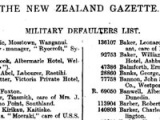
Lists of men who for a variety of reasons refused to serve in the First World War.
- Page 3 - Convictions for sedition 1915-18The War Regulations Act 1914 allowed citizens to be arrested and charged with sedition for making ‘disloyal’ or ‘seditious’ statements, either verbally or in print. This
Biographies
-
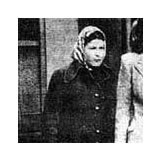 Parker, Pauline Yvonne
Parker, Pauline Yvonne
While attending Christchurch Girls' High School, Pauline Parker met Juliet Hulme and formed the friendship that was to radically change the course of both their lives. In 1954, the pair were convicted of murder in a sensational case.
Read more... -
 Sutch, William Ball
Sutch, William Ball
Even before his arrest, trial and acquittal on spy charges in the 1970s most New Zealanders had heard of Bill Sutch. He was a prominent citizen – known for his work as an economist, writer, public servant and diplomat.
Read more... -
 Ross, Sydney Gordon
Ross, Sydney Gordon
Sydney Ross was perhaps the greatest political hoaxer in New Zealand’s history.
Read more...
Related keywords
- WW1 home front
- public service
- WW1 stories
- conscription
- whaling
- alcohol
- protest
- maungaturoto
- prostitution
- death penalty
- justice system
- murder
- goldfields
- peter fraser
- minnie dean
- child welfare
- rua kenana
- maungapohatu
- ringatu
- medals
- waiouru
- museums
- winton
- roadside stories
- dunedin
- pauline parker
- juliet hulme
- prison
- burgess gang
- maungatapu
- WW1
- trial
- aramoana massacre
- nelson city
- whanganui city
- charles mackay
- bill sutch
- russia
- john gilfillan
- sydney ross
- police
- catholic
- religion
- james liston
- americans
- punishment
- poetry
- workers rights
- waihi
- strikes
- railway stations
- maketu
- bay of islands
- adolescents
- ngapuhi
- fiji
- aviation
- postal service
- ponsonby
- famous firsts
- daniel cooper
- wellington city
- newlands
- pukekawa
- bombing
- mona blades
- gangs
- arthurs pass
- economy
- cold war
- spies
- railways
- james cowan
- 1920s
- katherine mansfield
- gay rights
- homosexuals
- venn young
- national party
- henry garrett
- children
- conscientious objection
- painting
- joseph merrett
- new zealand truth
- george wilder
- newspapers
- racism
- chinese
- 1960s
- christchurch
- james mackenzie
- sheep
- law reform
- law
- invercargill
- housing
- social policy
- mazengarb report
- families
- fran wilde
- norman jones
- health
- labour party
- human rights
- mount eden prison
- missionaries
- george cross
- mokomoko
- timeline
-
Main image: Domingo Carlos, illegally working on a ship
'Enemy alien' Domingo Carlos’ exclusion order was still in force in September 1919, when he was arrested for working on the steamer Orari.

